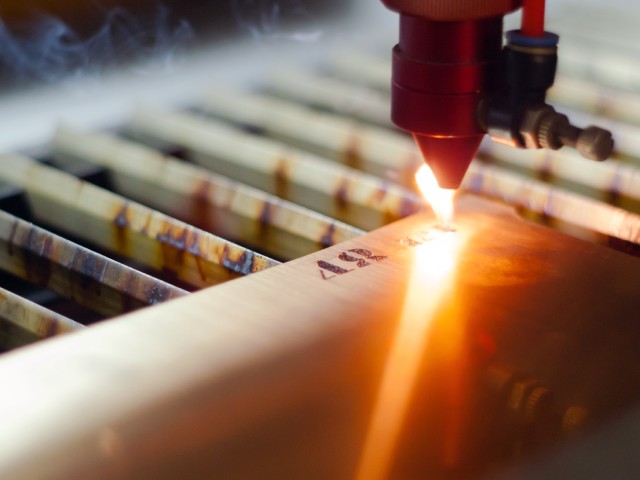

Whether you’re marking wires, steel components, or something else, laser marking offers many advantages over other methods. Different methods include engraving and etching, so you might wonder which one is best for your process. We’ll help you answer that question in our explainer of laser marking, engraving, and etching!
When people talk about laser marking, they often mean the broad category that includes various techniques. However, laser marking involves altering the surface properties of a material without cutting into it. This method uses a low-powered beam to heat the material, causing oxidation and a color change.
This non-destructive marking is especially beneficial for sensitive materials, like wire marking. There are many ways wire material reacts to UV laser marking, from changing colors to complete evaporation. Laser marking is ideal for creating readable, permanent, and durable marks on plastics, ceramics, and metals.
Laser engraving takes things a step further. Unlike laser marking, engraving removes material to create a cavity that reveals a design. This method is particularly effective for creating deep, permanent marks on hard materials like metal and stone.
Laser engraving is common in the automotive and aerospace industries, as markings need to be obvious and durable. The depth and clarity of the marks also make them resistant to tampering and wear, ensuring long-lasting identification.
Laser etching is a subset of laser engraving but involves melting the surface of the material to create a raised mark. Though it doesn’t go as deep as traditional engraving, it offers excellent contrast and readability.
This method is particularly useful for marking soft materials like aluminum and certain plastics. Many consumer electronics and medical device manufacturers use laser etching for creating high-contrast marks that comply with industry standards.
Now that you know the basics of common laser marking methods, you’re probably wondering which is best for your manufacturing process. First, consider the materials you will be working with. Metals, plastics, ceramics, and other materials each respond differently to laser marking, engraving, and etching.
Next, think about the durability and visibility of the mark. If you need deep, permanent marks, laser engraving might be your best bet. For high-contrast, readable marks on softer materials, laser etching could be the way to go. Finally, assess the speed and efficiency of each method. The speed of laser marking can make a significant difference in a high-volume production line.
Laser marking offers a range of methods to suit different needs and materials. Understanding the nuances of laser marking, engraving, and etching will help you make an informed decision that enhances your manufacturing process.
Choosing the right laser marking method can give you a competitive edge in your respective industry. Reevaluate your current processes, and consider integrating these advanced techniques to improve your product quality and traceability.
24World Media does not take any responsibility of the information you see on this page. The content this page contains is from independent third-party content provider. If you have any concerns regarding the content, please free to write us here: contact@24worldmedia.com
